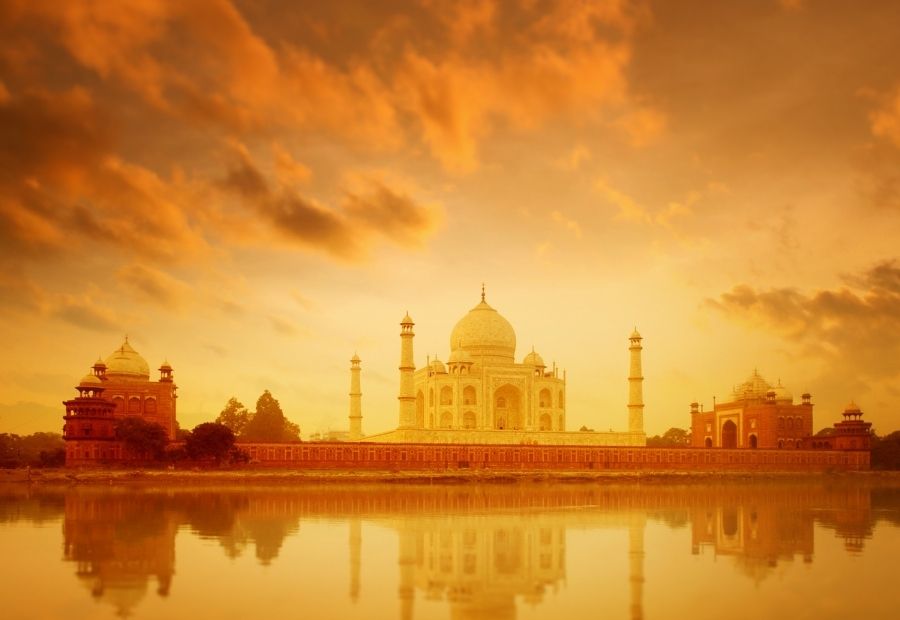This article on ‘Nexus in Indian Democracy & The Legal Framework – Read Here‘; is written by Isha Malhotra. She is a student from PDM University.
Table of Contents
Indian Democracy – An Overview
Introduction
After gaining the independence from British regime in 1947, India has gained the full-fledged status of a democratic republic. The framers of the democracy kept in mind several key points that were pre requisition that made India as the largest democracy of the world. The Constitution of India of 1950 is a written document which currently comprises over 450 Articles and 12 Schedules.
Borrowing several key characteristics from other various democracies of the world nourished the weaknesses in some areas prevailing in the democracy. The salience of most of the considerable features of the Indian constitution was added by the government of India Act, 1935. And other important constitutions of the world that enhanced the structure of Indian democracy (refer to the detailed sources of Indian constitution from internet). As our constitution provided flexibility to every sector of country in terms of guaranteed rights, immunities against wrongful actions.
The four pillars of Democratic Republic are: –
1) Legislation
It consists of Upper House (Rajya Sabha) also known as ‘the Council of the States’ and the Lower House (Lok Sabha) also known as ‘the House of the People’. Together these two houses constitute the parliament which is the threshold of law making essential for the welfare for the country.
2) Executive
It constitutes the President of India, followed by council of ministers headed by the Prime Minister. The executive wing is responsible for proper implementation of law as made by the parliament. Executive sector has the duty to ensure proper compliance between the Union and the States. It ensures implementation of rules and to govern the country on the basis of these laws.
3) Judiciary
The most important pillar of Indian democracy that is built for keeping an independent watch over the effective implementation of these laws and that they do not supersede the fundamental rights and securities of the people of the country.
4) Media/ Press
They are known as the watchdog of an effective and healthy democracy. Media is an independent and autonomous body to look and report the functioning of the proper democracy in the country and report any misuse of the power or demeaning of the rights to the proper thus providing transparency glide between the govt. And the people.
If any of these pillars is weakened or succumbed to the termite of corruption or any other factor that could disturb the smoothness of the democracy, thus weakening it then entire system collapses.
Fundamental Rights
Indian constitution guarantees its citizens and people some rights and immunities that are to protected against any type of order quashing them or threatening them.
The Rights Include
- Right to Speech and Expression
- The Right to Equality
- Right to Life and Liberty
- The Right to Constitutional Remedies
- Right to Religion.
Indian Governance System and The Legal Patterns-
India is a country of 28 states and 8 union territories administered by president as the head of the country; and each state being governed by a state government which is led by a cabinet of ministers headed by a chief minister. The Indian government system includes a federal structure of government; which divides the power between the union and the states; thus comprehending non supremacy of any level of government.
The Indian Legal System
Sources of Legal System:
- Constitution of India– As the Supreme source
- Statues- Enacted by the Parliament and various other subordinate bodies
- Judicial Decisions- Some amendments in the already pre-existing laws by the landmark judgements in various cases of the supreme court
- Customary Laws- Ancient Sources and Religious Conventions.
Hierarchy of the Courts in Judiciary
Supreme Court
It is the apex court and is exclusive of the country in the Indian law system and it has the power to debunk or amend the decisions of its subordinate courts if found, overriding the provisions of the constitution or change it accordingly to the evidences.
High Court
Each state or two states have one high court. It is the highest court in the state territory and can take decisions over the challenging decisions of the subordinate courts.
Going downright, there are District and Session Courts and they are obligated to follow the decisions of the Supreme Court and High Court.
It is to be noted that only high court and the supreme courts have the power to hear the matters relating to abridging of the fundamental rights viz. The writs that are to be issued via procedure as mentioned in Article 32 and 226 of Indian Constitution.
The Five Type of Writs Includes-
- Habeas corpus
- Mandamus
- Certiorari
- Quo warranto
- Prohibition.
Distribution of Powers in Indian Governance
There is a threefold division of powers among: – Union, State and The Judiciary.
Schedule 7 of the Indian Constitution enumerates three lists namely: – Union List, State List and Concurrent List
Concurrent list is generally looked over by the union.
In this threefold fold distribution of the powers among the union and the state, the exigencies of the supremacy of union prevails over the state in any affair in the concurrent list or in any other case if there is overlapping between the union and the state law.
In essence, union of the India is clearly credited with the vested supreme powers for implementing their laws over the state in case of any overlapping.
Indian Judicial Doctrines-
In keshavananda Bharti V. State of Kerala (1973), the supreme court landmark judgement provided the basic structure of constitution that can’t be altered, amended by parliament under any circumstances.
Democracy, federalism, independence of the judiciary, secularism etc. Are part of the basic features.
Doctrines of Indian Constitution
The various Doctrines have been viewed to have preserve the Sanctity of the Indian Democracy
1) Doctrine of Harmonious Construction
The meaning of this doctrine is construed to provide harmony in case of overlapping of the powers over any issue as in schedule 7. This doctrine was first recognized in (Tika Ramji V. State of Up)
2) Doctrine of Eclipse-
The doctrine states that if any part of the law made, breach the fundamental rights, it is held unenforceable by the court. As that part becomes the ‘eclipse’ on fundamental rights of the person. This doctrine was first recognized by Bhikaji V. State of Madhya Pradesh
3) Doctrine of Colourable Legislation-
This doctrine states that what cannot be done directly, can’t be done indirectly. This doctrine was first recognized in State of Bihar V. Kameshwar Singh
4) Doctrine of Severability
This doctrine enables to separate the good and bad parts of the statue so passed. Any bad part doesn’t make whole law fully void. This doctrine was recognized in RMDC V. Union of India
5) Doctrine of Pith and Substance
The doctrine provides the flexibility in the separation of the powers in the Indian democratic system. It was first recognized in State of Maharashtra V. F.N. Balasar.
6) Doctrine of Territorial Nexus
Article 245 states that a state legislature can make laws on the territory of the state and not on extraterritorial laws provided there is nexus or connection between the state and the object of the legislation. It was first recognized in Tata Iron Steel V. State of Bihar
7) Other Doctrine includes
Doctrine of Severability, Doctrine of Ancillary Power, Doctrine of Judicial Review.
Rule of Law in the Indian Democracy
As constitution of India has not sworned- In all the powers in one branch of governing body. There is an equivocal distribution of powers among all the branches of governing bodies, judicial system is the apex responsible for maintaining the law and order of the democratic system.
Role of the judiciary in Indian democracy
As the legislature and the executive branch are superlative in making the laws for country and govern the country accordingly.
The Indian Judicial System is necessary
- To look and cross check and invalidate the wrong actions of legislative and the executive wing that breach the basic structure of the constitution and abridge the fundamental rights of the citizens.
- In order to maintain the doctrine of separation of powers and maintain the rule of law in country.
- To keep the checks and balances of law and order to be followed in every task being done.
- No person or any government official even the supreme leader of the state could practice dictatorship.
- The judges of the Indian courts are independent from any coercion from anyone and have the power to look and judge the matters accordingly in compliance with the procedure as mentioned in the constitution.
The Extent of Powers of Indian Judiciary
The Indian judiciary is primordial in taking actions against any type of wrong being done in purview of being against the law and order. The judiciary is liberal in punishing anyone who is charged of any wrong causing damage to the democracy and can sue the wrongdoer defying all the prominent positional disparities be it, any leader of the party or the minister, in accordance with the procedure.
Conclusion
It is to be noted that for proper and effective functioning of smooth democracy, the legal system and the democracy should work complementary of each other. Indian democracy is well dependent on the judicial system. The role of judiciary is the most important in the constitution. The power of judicial review of legislative and executive action is considered to be an essential tool for preserving the doctrine of separation of powers and the rule of law in a democracy.
The feature of the separation of power is introduced so that government should work effectively not to make it weak rather it should not be over burdened with extensive responsibilities. Democracy is both the power and the challenge and thus to cope with the same, it is better to analyse the accords of the provisions which were comprehended well to cater the balance between development and functioning the existing democracy in the system.
Disclaimer: The opinions and views in the articles and research papers published on this website; are personal and independent opinions of the author. The website is not responsible for them.
Legal Thirst has created a telegram group for exchanging legal knowledge, Events, and various opportunities.
You can click on this link and join:
Follow Legal Thirst on Instagram and Subscribe to our YouTube channel for more amazing legal content.

